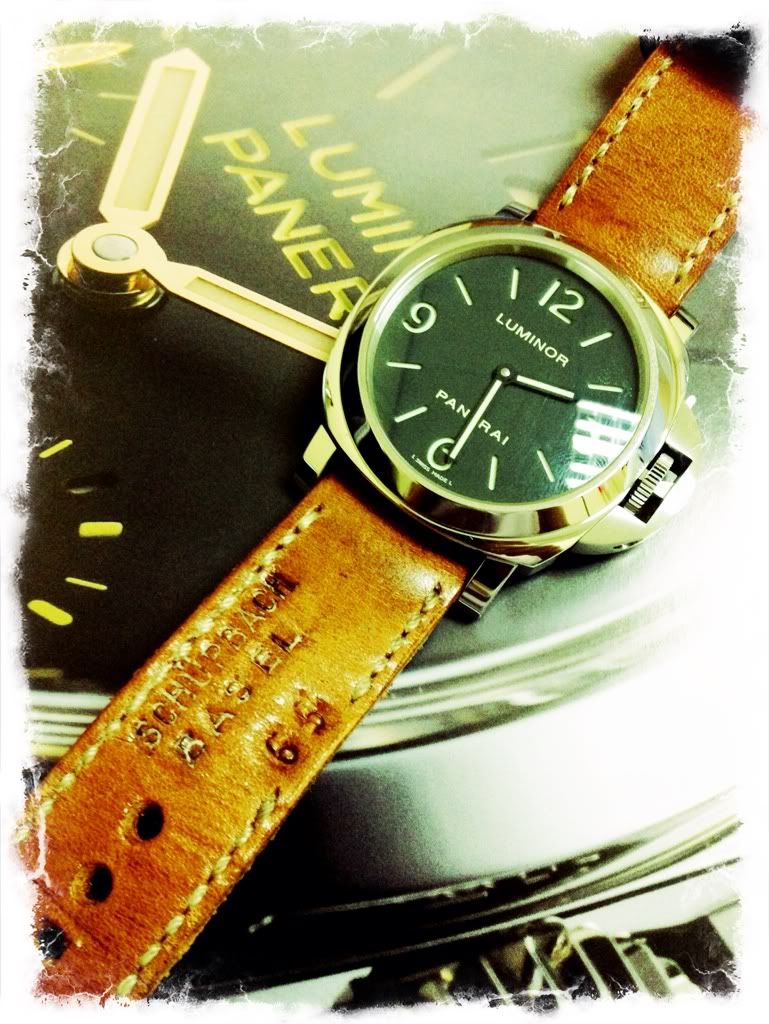19 December 1941: The Decima Flottiglia MAS attacked the port of Alexandria with three maiali (SLC). The battleships HMS Valiant and Queen Elizabeth (and an 8,000-ton tanker) were sunk in shallow water putting them out of action for many months.....
Just sharing the complete history
http://www.worldnavalships.com/forums/showthread.php?t=12100Copy of a Letter of Lieut.Luigi de la Penne to his Mother and other details appertaining to this post "My Dear Mother: By the time you receive this letter I will be
dead. I volunteered for a dangerous mission which failed..."
This was the first of three letters written by Lieutenant Luigi
Durand de la Penne of the Italian Navy two weeks before Christmas
1941. A second announced success, a third that he was a prisoner of
war. When the mission ended, the appropriate letter would be posted.
De la Penne, twenty-seven, a handsome, athletic six-footer was
about to embark on an undertaking that ranks high in the annals of
courage: he was to be the leader of a six man party in a barehanded
attack on British naval power at Alexandria. Pitting twelve stone
men against 32,000 ton battleships he was destined to win a single
naval victory and the admiration of its principal victim.
De la Penne's assignment was to sink main elements of British sea
power in the Mediterranean at a critical moment in history. The
British had just lost a battleship and an aircraft carrier to
submarines. The remaining two mediterranean battleships had taken
sanctuary in Alexandria harbor. De la Penne and his fellow
volunteers were to ride midget submarines - called "pigs" right into
the harbour and attack the ships there.
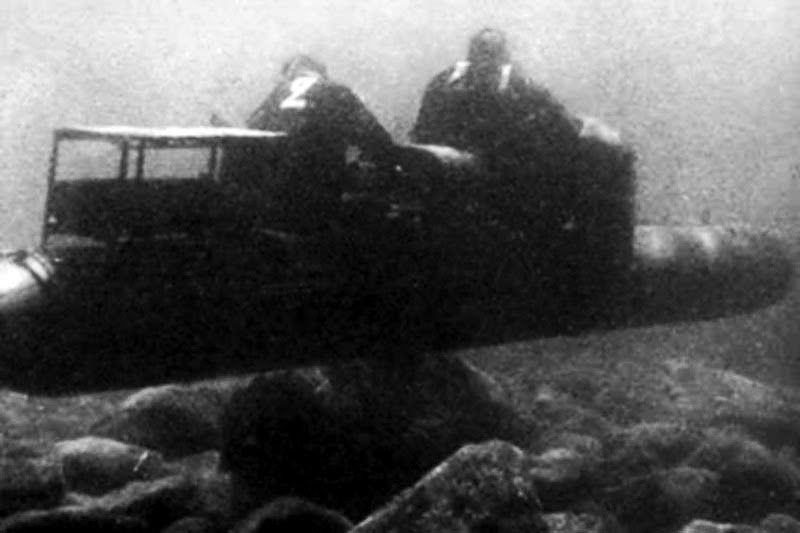
Each "pig" was twenty two feet long and twenty one inches in
diameter. Propelled by silent electric motors they had a speed of
two to three m.p.h., a range of ten miles. a detachable warhead
carrying 660 pounds of explosive. once in the harbor the teams were
to attach explosive charges to hulls then escape if possible.
The odds that any of them would return were slim. De la Penne and
his men were advised to make wills and pack belongings for shipment
home in case they didn't return. No officer of the group was
supposed to be married. "But,. de la Penne says, "I disliked the
idea of dying without leaving a son behind." So he proposed to
Valeria Butti, pretty daughter of a prominent Genoa family. After a
secret ceremony de la Penne reported back for duty.
On 18th December the three teams were aboard the submarine
Scire', lying on the sea floor outside Alexandria harbor. Latest
intelligence reports confirmed that the battleships HMS Valiant and
HMS Queen Elizabeth were in the harbour. De La Penne and his
crewman, Petty Officer Emilo Bianchi, where to take the Valiant,
Lieutenant Amtonio Marceglia and Spartaco Schergat, the Queen
Elizabeth, Lieutenant Vincenzo Martellotta and Mario Marino where to
attack a 16,000 ton fleet tanker, and then scatter floating
incendiary bombs in the hope that oil from the tanker would set the
entire harbour on fire. After completing their work, the teams were
to swim ashore, steal a fishing boat and rendezvous on the 24th
December with an Italian submarine.
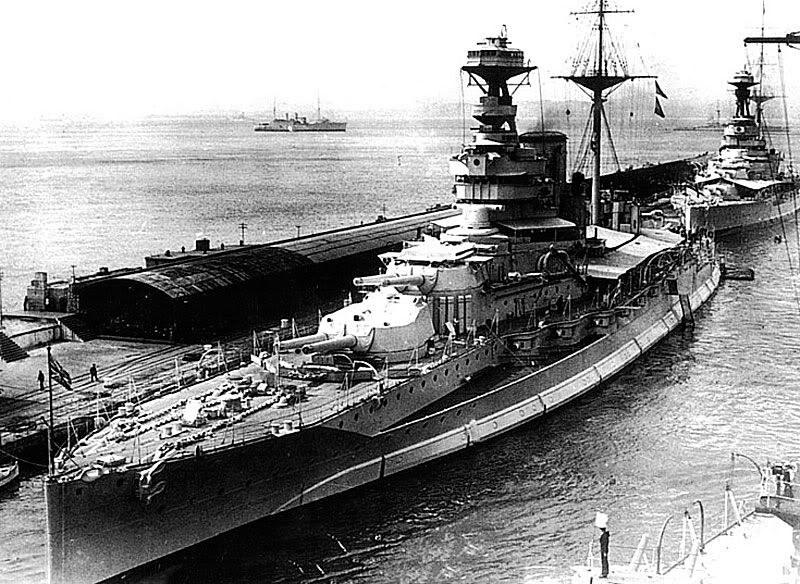
The HMS Queen Elizabeth battleship
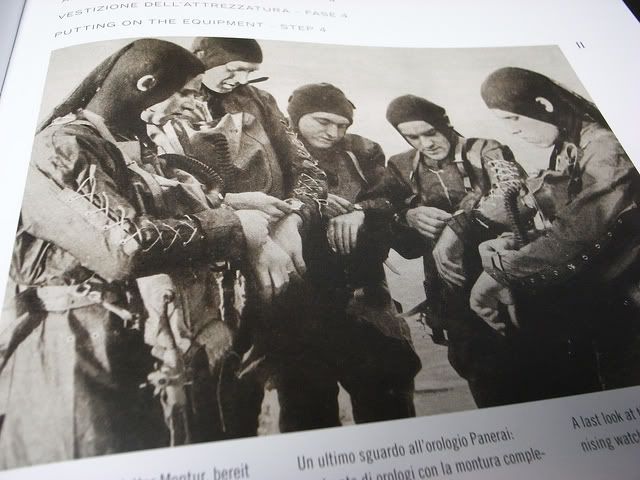
yeah...yeah...time for action !!
Shortly before 9 p.m. the crews struggled into there tight rubber
suits. Their little craft moved slowly towards the harbor
lighthouse. As they sat astride the pigs, only their heads protruded
above water. Time fuses were to be set. The tanker would go up at
about 5.55 a.m., the Valiant at 6.05, the Elizabeth at 6.15. There
was still time for the men to eat - possibly their last meal. From
sealed canisters, they extracted cold chicken, bread and small
bottles of champagne.
Now the moment had come to move in closer to the steel net which
guarded the harbour entrance. The pigs had pneumatic cutting shears,
but they were noisy and nets where frequently festooned with
explosive charges. While de la Penne hesitated, pondering his next
move, the lighthouse and the harbour suddenly lit up - ships were
about to enter!
As the net parted, de la Penne said : "Lets go! Three destroyers
appeared out of the darkness. The three pigs followed, tossing
wildly in the destroyers wake. Once inside the frog men set about
spotting their targets. De la Penne approached the Valiant - and ran
into a protective net. he and Bianchi tried to lift it. It was too
heavy. There was only one solution :
to try to roll themselves and there pig over the top without being
discovered. To their relief, the maneuver was successful. They
promptly submerged. The best place for the change was under No. 1
turrent. To get a final check on position, de la Penne surfaced,
unreeling a coil of cord which would guide him back to the pig. When
he returned to the depths the pig refused to start. Suspecting that
the cord had fouled the propeller he turned to Bainchi to signal him
to clear it. Bianchi was gone! De la Penne went to work alone.
The explosive warhead was still 100 feet out of position. Working
with bare hands numb and cold, de la Penne started inching his 660
pound burden through the mud. After nearly an hour of back breaking
work the charge was in position but de la Penne was too exhausted to
attach it to the hull. However since it was on the bottom only five
feet under the ship, he felt sure it would work. The time was now 3
a.m. - three hours to go before the explosion.
Almost at the point of collapse, he surfaced with a faint splash.
It was enough to alert the deck watch on the Valiant. Instantly a
searchlight pin pointed him. There was a hail of bullets. Spotting
an anchor buoy, de la Penne swam for its protection. Behind it was
Bianchi. His breathing apparatus had failed, he had lost
consciousness, bobbed to the surface, revived and swum to the buoy.
Soon a boat picked the two men up. At 3.30 a.m. they were
questioned on the quarter deck by the Valiants executive officer.
Beyond giving rank and serial number, both prisoners refused to
divulge any information. They were separated and de la Penne was
imprisoned in a store room on a lower deck of the Valiant - almost
directly over the warhead. Braced by a glass of rum and a packet of
cigarettes, he watched the minutes tick away 5.30, 5.40....
There was a rumble in the distance. Martellotta's team had blown
up the fleet tanker. Her entire stern was torn away, and a destroyer
lying alongside was also damaged, but the incendiaries failed to
work. It was now 5.54 eleven minutes to go. De la Penne pounded on
his cell door, asking to be taken to the ships commander, Captain
Charles Morgan. "your ship will blow up in ten minutes," he said. "I
have no desire to kill men unnecessarily. I suggest you get all
hands on deck."
"Where is the charge placed?" Morgan asked. "if you refuse to
answer, I must send you back below." De la Penne refused, for if
Morgan knew that the charge was lying on the bottom, he could move
the Valiant out of danger. As he was taken back to his cell, the
ship's loudspeaker system ordered all hands on deck.
De la Penne kept his eyes glued to his watch. His life, quite
likely was ticking away. had he set the fuse properly? Of course, it
was impossible to set it to the exact second. At 6.06, the charge
exploded. The Valiant shook convulsively and filled with smoke. De
la Penne was hurled across his cell and knocked out momentarily
unconscious. When he revived, he saw that his cell door had been
blown open. he made his way on deck unnoticed, fixed his eyes on the
Queen Elizabeth near by. At 6:15 there was a terrific explosion.
Magceglia had placed the charge directly under the Queen Elizabeths
engine room, and oil gushed from her stacks showering the harbour
and the Valiant. Since the anchorage was shallow, all three ships
settled on the bottom remaining nearly upright.
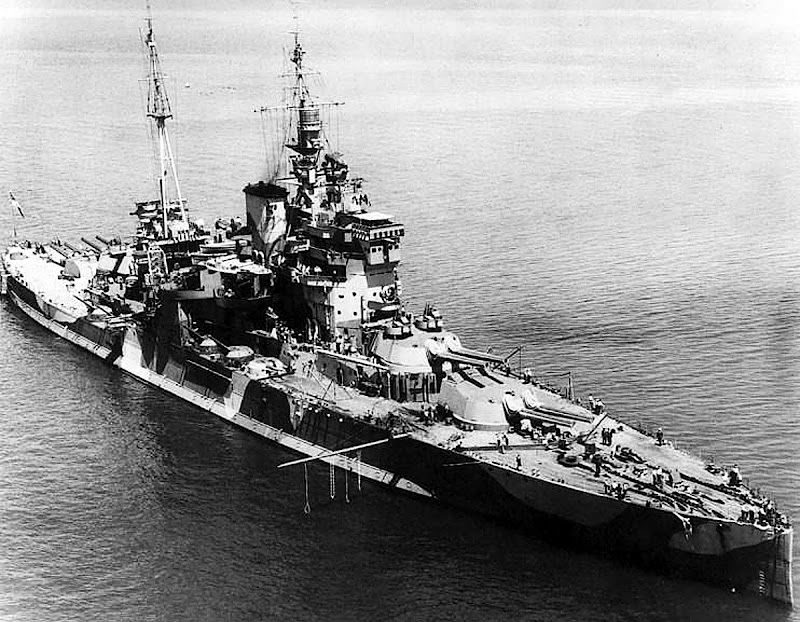
The HMS Queen Elizabeth battleship
At this moment the Italian Navy was supreme in the Mediterranean,
and with the protection its cruisers could give, there should have
been no insurmountable problems about supplying German and Italian
troops in North Africa. But those cruisers never ventured out, and
for an astonishing reason. Air reconnaissance pictures taken next
day were correctly interpreted by Italian intelligence officers:
Valiant was listing to port : Queen Elizabeth was down by the bows;
both clearly, were seriously damaged. But Mussolini overruled his
experts. The ships, he decreed, were unharmed. Since his world could
not be challenged, the Italian fleet remained at port, and missed
its golden opportunity.
The British did everything possible to support Mussolini's folly.
While frantic work was done on the jagged forty-foot holes in the
two warships, calm reigned on the surface. Both ships kept up steam.
Band concerts and receptions were held on deck. But it was more than
a year before either was again ready for action.
Meanwhile, the six Italian frogmen had all been taken prisoner.
De la Penne was sent to Cairo, thence to Palestine, where he escaped
to Syria. He was caught and place aboard an India bound ship. In
India, he escaped once more and was again picked up.
An occasional letter got through from his wife. One gossiped
happily about the clever things "Renzo" had done. Renzo was the name
of de la Pennes younger brother, and he wondered about his wifes
sanity. He didn't know he had a year old son of that name.
De la Penne was released shortly after Italy made peace with the
Allies in 1943. He joined the Allied side, helped to thwart plans of
retreating Germans to block the harbor at la Spezia. He and others
slipped in and sank the ships there before they could be manoeuvred
into the harbour entrance for scuttling.
One day in 1945, there was an extraordinary ceremony. Crown
Prince Umberto of Italy was about to pin his nation's highest
decoration the Medaglia d'Ore on de la Penne's chest. From those in
attenance a man stepped forward - Vice Admiral Sire Charles Morgan,
British commander of naval forces in the area, former skipper of the
Valiant. Thanks to de la Penne's warning, not a life had been lost
among the Valiant's 1,700 man crew.
Sometimes....i do believe that we can appreciate our toy more....if we can understand a bit of the history behind it..

